

In honor of Sam G. Koutroulakis D.D.S. (1931-2016) of Beaufort, S.C. by Harry Koutroulakis D.M.D., MAGD - MUSC class of 1986
Extraction of teeth that cannot be saved due to decay, trauma, or disease has been the simplest and most common dental intervention throughout history. Human skulls with teeth that show evidence of active removal have been found at pre-historic sites on all human-occupied continents. Ambrose Pare, considered to be the father of surgery, included in his 1575 book Opera Omnia detailed entries about dental extractions and illustrations of and instructions for the use of dental instruments.
Extraction of teeth fall into two categories: simple and surgical. Simple extraction is performed on teeth that are visible in the mouth and is achieved with instruments that elevate and grasp the desired tooth. Evidence of a clean extraction would include the entire root and an intact socket. Surgical extraction is performed on teeth which are not visible or accessible. These extractions always require an incision and some of the surrounding tissue or bone may be removed during the procedure. Extraction is also used in orthodontia and oral surgery.
BARBER SURGEONS
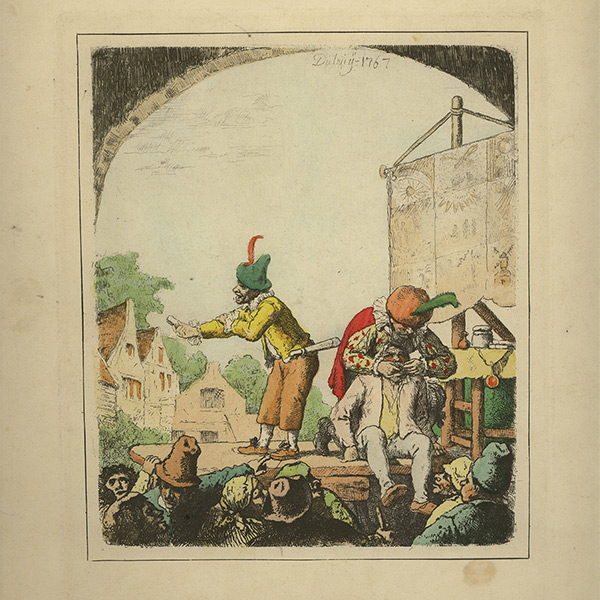
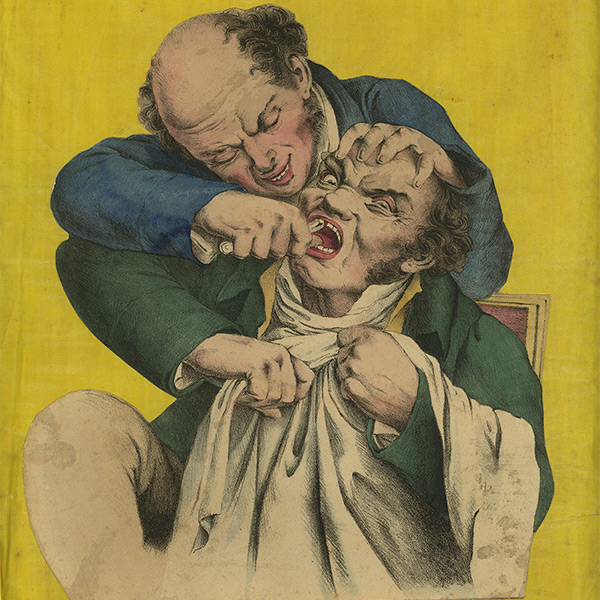
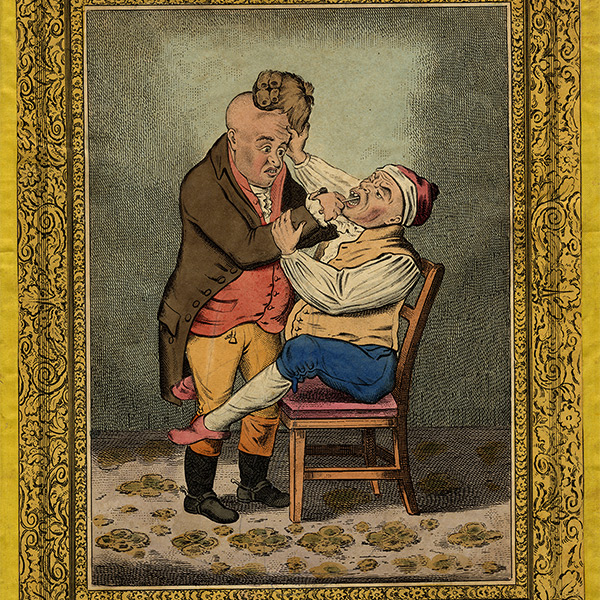 The barber surgeons of medieval Europe are the forebears of today’s dentists. Barber surgeons themselves were divided into two groups: those who performed complex surgeries and those who performed simple procedures including lancing boils, bloodletting, and dental extractions. The earliest examples of instruments designed specifically for extractions are the pelican and the tooth key. The pelican was first described and illustrated by French and Italian authors in works dating to 1363 and 1483, respectively. The pelican was so named because it resembled the bird’s beak, with a long straight shaft paired with a curved claw which worked in tandem to remove the tooth. It was used until the early 1800s when it was replaced by the tooth key or turnkey, which itself was replaced in the late 1800s by forceps; the key continued to be used somewhat after that. The tooth key had an iron shaft and handles made of wood, horn, ivory, or metal. When used the tooth key was inserted into the mouth, the claw was hooked over the tooth to be extracted, and the handle then turned, as if opening a doorknob. This form of extraction could be extremely painful and often resulted in broken teeth, fractured jaws, and soft tissue damage, as well as the removal of surrounding teeth.
The barber surgeons of medieval Europe are the forebears of today’s dentists. Barber surgeons themselves were divided into two groups: those who performed complex surgeries and those who performed simple procedures including lancing boils, bloodletting, and dental extractions. The earliest examples of instruments designed specifically for extractions are the pelican and the tooth key. The pelican was first described and illustrated by French and Italian authors in works dating to 1363 and 1483, respectively. The pelican was so named because it resembled the bird’s beak, with a long straight shaft paired with a curved claw which worked in tandem to remove the tooth. It was used until the early 1800s when it was replaced by the tooth key or turnkey, which itself was replaced in the late 1800s by forceps; the key continued to be used somewhat after that. The tooth key had an iron shaft and handles made of wood, horn, ivory, or metal. When used the tooth key was inserted into the mouth, the claw was hooked over the tooth to be extracted, and the handle then turned, as if opening a doorknob. This form of extraction could be extremely painful and often resulted in broken teeth, fractured jaws, and soft tissue damage, as well as the removal of surrounding teeth.
ELEVATORS
Elevators are used to loosen a tooth or its root before extraction by other means, such as with forceps or scalpels. An elevator is inserted between the tooth and the jawbone but its force is directed to the tooth. By applying gentle pressure to it, the dentist lifts it from the socket. Unlike the tooth key or pelican, elevators are still used for dental extractions today.
FORCEPS and SCALPELS
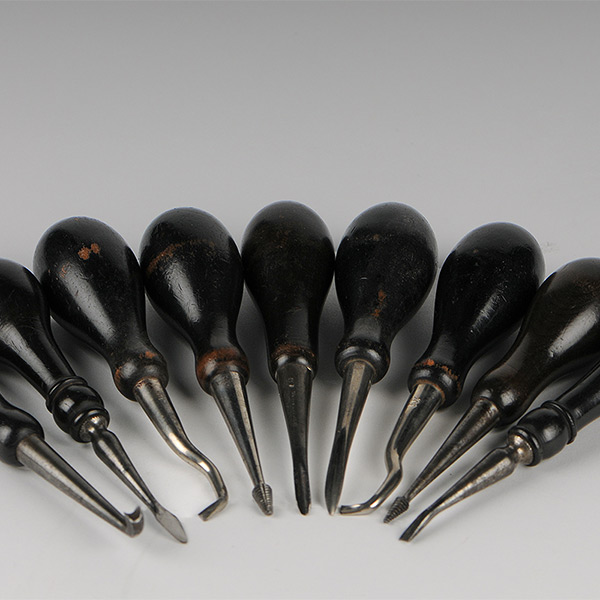 Forceps come in numerous shapes and sizes, all specific to the anatomy of each tooth. They are designed with relatively short blades, but long handles in order to provide better leverage. The handles for forceps for upper teeth are aligned with the blades, while those for lower teeth sit at right angles to the blade. Blades vary in width, length, and curvature to accommodate the different shapes of the roots. Root screws, also known as dental screw forceps, like the one to the left assisted in the extraction of the root of a tooth after its crown was removed. The dentist screwed it into the center of the tooth and then pulled out the root. Scalpels are used to make incisions in the gums to access the tooth that needs to be removed. Scalpels are also used to lance abscesses and in other oral surgery procedures.
Forceps come in numerous shapes and sizes, all specific to the anatomy of each tooth. They are designed with relatively short blades, but long handles in order to provide better leverage. The handles for forceps for upper teeth are aligned with the blades, while those for lower teeth sit at right angles to the blade. Blades vary in width, length, and curvature to accommodate the different shapes of the roots. Root screws, also known as dental screw forceps, like the one to the left assisted in the extraction of the root of a tooth after its crown was removed. The dentist screwed it into the center of the tooth and then pulled out the root. Scalpels are used to make incisions in the gums to access the tooth that needs to be removed. Scalpels are also used to lance abscesses and in other oral surgery procedures.
TROPHY TEETH
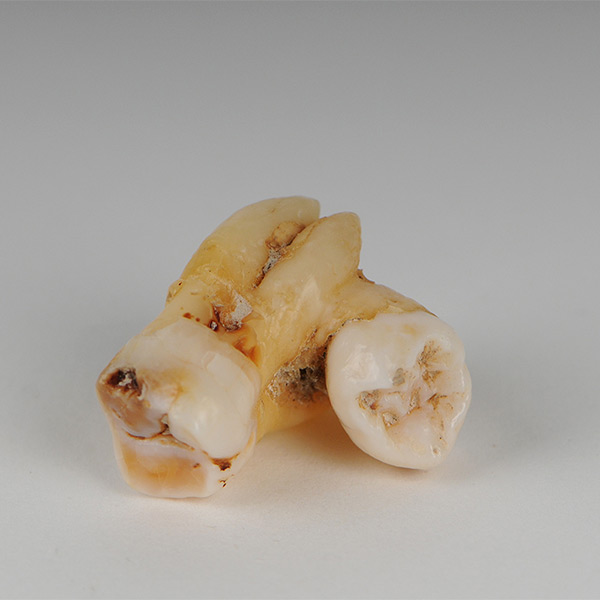
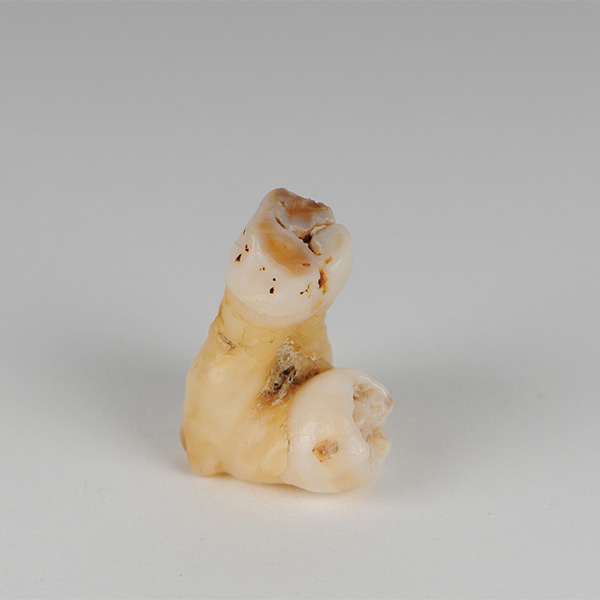 Early dentists often celebrated their skills by displaying teeth which they had successfully extracted, especially those whose roots were intact. This posterior molar with an attached and impacted wisdom tooth would have been the pride of the dentist who extracted it in one piece. She might have displayed the tooth as if to convey to her patients, “If I can get that tooth out, nothing in your mouth have will be a problem for me.” Some dentists, notably Dr. Painless Parker made necklaces out of their trophies, like dentists of old.
Early dentists often celebrated their skills by displaying teeth which they had successfully extracted, especially those whose roots were intact. This posterior molar with an attached and impacted wisdom tooth would have been the pride of the dentist who extracted it in one piece. She might have displayed the tooth as if to convey to her patients, “If I can get that tooth out, nothing in your mouth have will be a problem for me.” Some dentists, notably Dr. Painless Parker made necklaces out of their trophies, like dentists of old.

